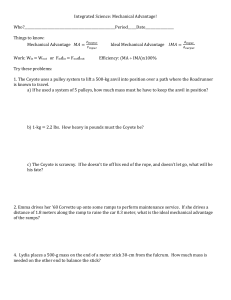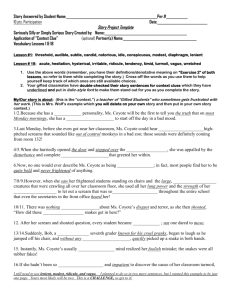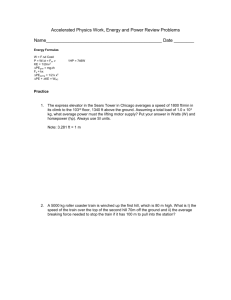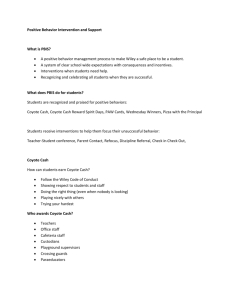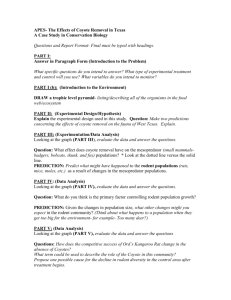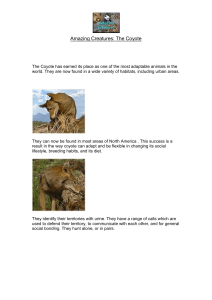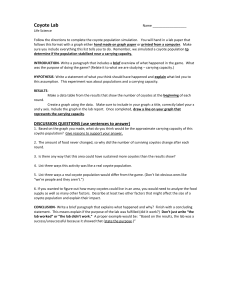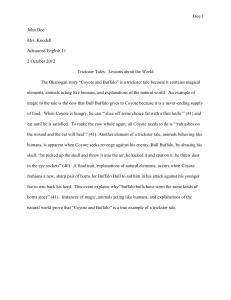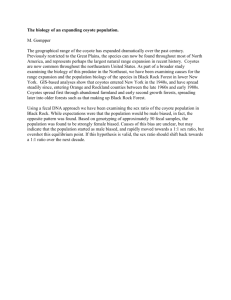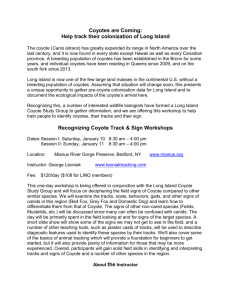Physics Work, Energy, and Power Review Problems
advertisement
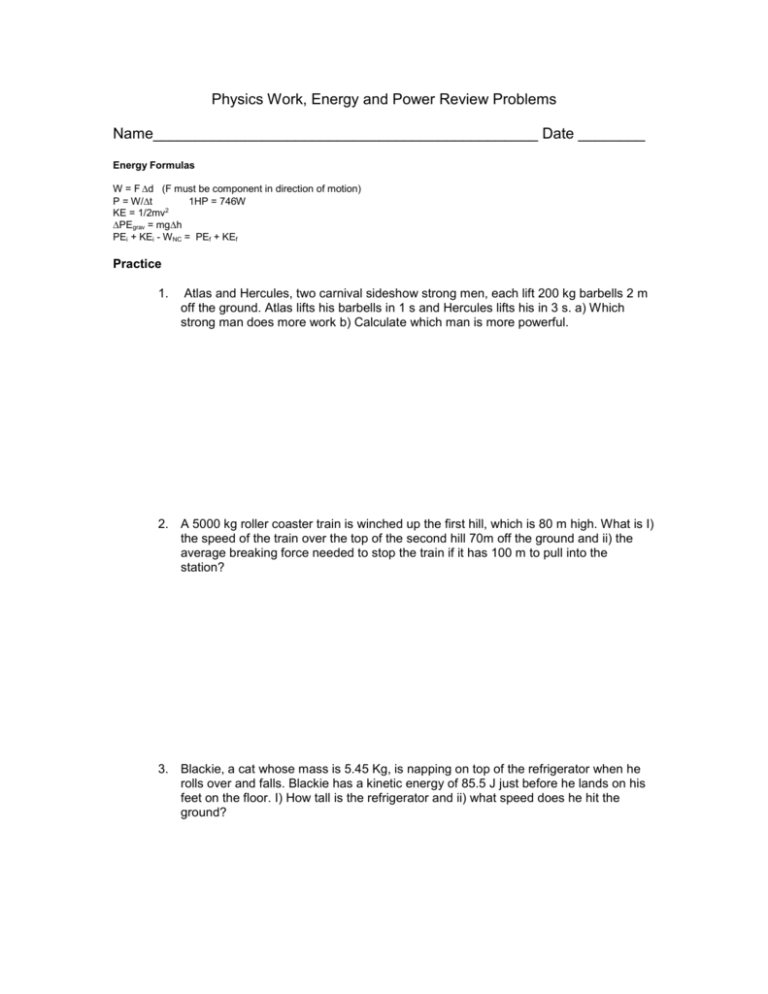
Physics Work, Energy and Power Review Problems Name______________________________________________ Date ________ Energy Formulas W = F d (F must be component in direction of motion) P = W/t 1HP = 746W KE = 1/2mv2 PEgrav = mgh PEi + KEi - WNC = PEf + KEf Practice 1. Atlas and Hercules, two carnival sideshow strong men, each lift 200 kg barbells 2 m off the ground. Atlas lifts his barbells in 1 s and Hercules lifts his in 3 s. a) Which strong man does more work b) Calculate which man is more powerful. 2. A 5000 kg roller coaster train is winched up the first hill, which is 80 m high. What is I) the speed of the train over the top of the second hill 70m off the ground and ii) the average breaking force needed to stop the train if it has 100 m to pull into the station? 3. Blackie, a cat whose mass is 5.45 Kg, is napping on top of the refrigerator when he rolls over and falls. Blackie has a kinetic energy of 85.5 J just before he lands on his feet on the floor. I) How tall is the refrigerator and ii) what speed does he hit the ground? 4. A coyote, whose mass is 20.0 kg, is chasing the roadrunner when the coyote accidentally runs off the edge of a cliff and plummets to the ground 30.0 m below. What average force does the ground exert on the coyote as he makes a coyoteshaped dent 0.42 m deep in the ground? 5. The average food energy intake for humans is 2000 Calories/day. One dietary Calorie is equivalent to 4186 J. How high would a 55 kg person have to climb in order to “burn off” all the calories they consume in one day? (note; this calculation will ignore the large amount of energy the body continually loses to heat) 6. A student pushes a 0.5 kg mass along a horizontal ramp according to the F-d graph shown below. a) How much work did the student do on the mass? b) What speed did the mass leave the student’s hand? c) If a constant friction force of 1N opposes the mass after it leaves his hand, how far did it slide along the ramp? d) If the mass leaves the student’s hand twice as fast, how far would it slide now? e) Does your answer to d) depend on the mass of the object being slid? Explain! 3 F (N) d (m) 1
